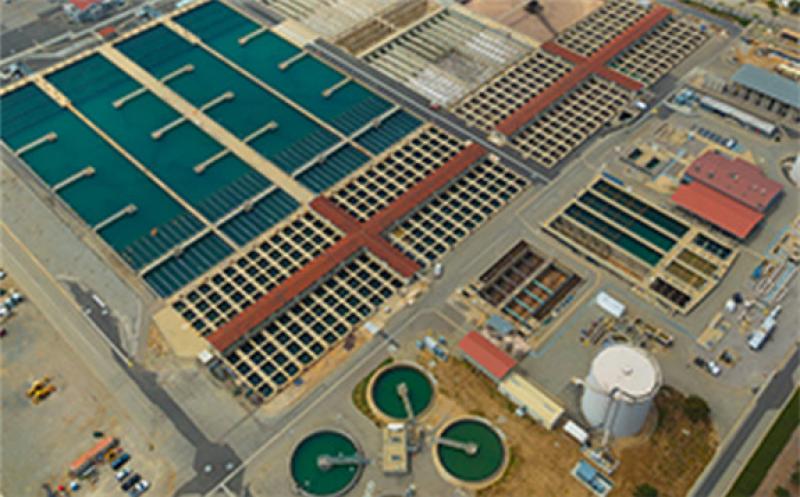 Weymouth treatment plant, where a 3MW solar system is installed. Image: Metropolitan Water DIstrict
Weymouth treatment plant, where a 3MW solar system is installed. Image: Metropolitan Water DIstrict
The microgrids will comprise solar PV and battery energy storage and are aimed at boosting the district’s energy resilience and cutting operational costs by optimising the solar power and reducing the peak load at the facilities.
The microgrids will be grid-connected but also able to island during an outage.
The projects are estimated to cost $11-12 million. However, through energy savings and incentives from the California Public Utilities Commission, Metropolitan expects to recoup its costs within three years.
“Over the last decade, Metropolitan has invested about $28 million in solar power systems at the Jensen, Weymouth, Skinner plants and our Diamond Valley Lake Visitors Centre to reduce our operational costs and cut our carbon footprint,” said Metropolitan chief engineer John Bednarski.
“These battery energy storage systems take our commitment a step further – allowing us to store excess energy generated during peak solar hours for later use.”
The projects form part of Metropolitan’s Energy Sustainability Plan, which identifies ways to contain energy costs, move toward energy independence and reduce price volatility through cost effective alternative energy projects.
The four project sites at the Granada Hills, La Verne and Riverside’s Temecula Valley water treatment plants and a Lake Forest pump station were selected because of their on-site solar power generation, their location within high-threat fire districts and/or their location in low-income and disadvantaged communities, according to a company statement.
They are due to be completed in mid-2022.